- Home
- slideshows
- miscellaneous
- 2 US grad students who were on the Diamond Princess cruise share harrowing details and photos from their quarantine and 'zombie movie' evacuation
2 US grad students who were on the Diamond Princess cruise share harrowing details and photos from their quarantine and 'zombie movie' evacuation
On January 20, Fehrenbacher and Christoph boarded the Diamond Princess in Yokohama, Japan for a vacation that would turn into a nightmare.

On February 3, a day before the cruise was slated to end, a voice on the ship's intercom announced the discovery of a case of the new coronavirus onboard. Fehrenbacher had just recovered from a fever.
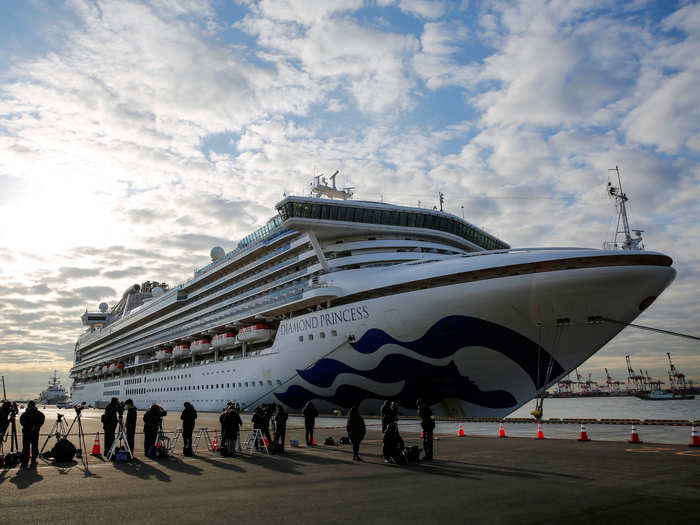
The announcer asked anyone who had experienced fever, chills, or cough to report to the ship's medical center. Fehrenbacher debated whether or not to go.
"Anybody that might have symptoms of the virus are all going to the exact same place at the exact same time, and that's where I didn't want to be," Fehrenbacher told his alma mater, Grand Canyon University.
After a phone call with his dad, he decided to go down for the medical screening.
"Here I am in my sweats and my surgical mask and I'm walking into gloom," Fehrenbacher said. "I'm shivering. I'm in an elevator next to people in evening gowns and tuxedos going to dinner and shows. I couldn't help of thinking of a scene from 'Titanic' where you have Jack Rose running around panicking and 95% of everyone else is staring at him like he is the crazy one."
Fehrenbacher said he stood very close to a woman who was clearly sick when he got that initial screening.
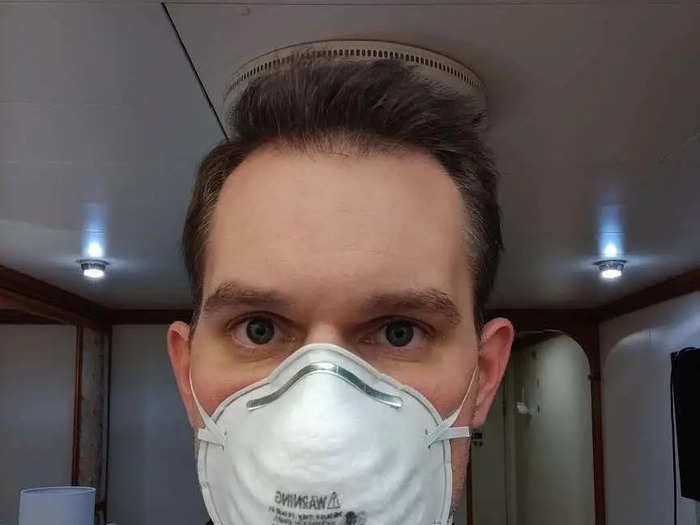
"You could hear that cough that's deep down in your lungs. I empathized with her and felt so bad," Fehrenbacher said. But he said he also recalled thinking to himself, "OK, I don't want to be in this room."
When the ship docked in Yokohama on February 4, it was put under quarantine. Officials in hazmat suits went door-to-door with questionnaires.
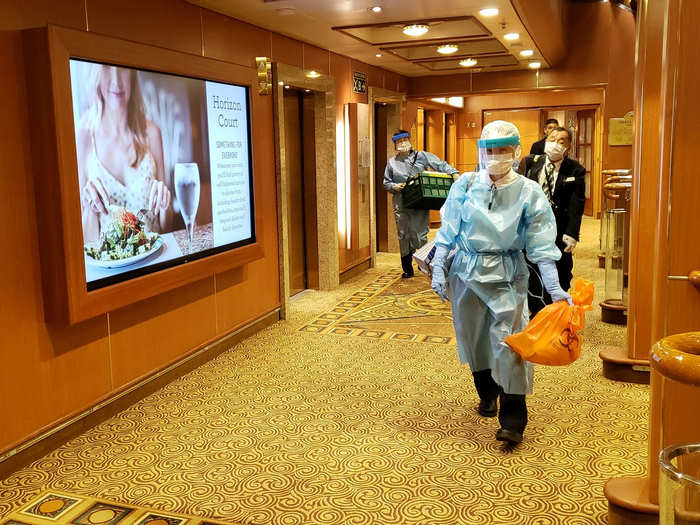
Fehrenbacher said he felt "super anxious" and stayed up until 3 a.m. waiting for the knock on his door.
He fell asleep, then woke back up when the staff came around at 4 a.m. Given his recent fever, they took a swab from him and sent it off for testing.
By the following morning, 10 people on the ship had tested positive for the virus. Ambulances took them to nearby hospitals.
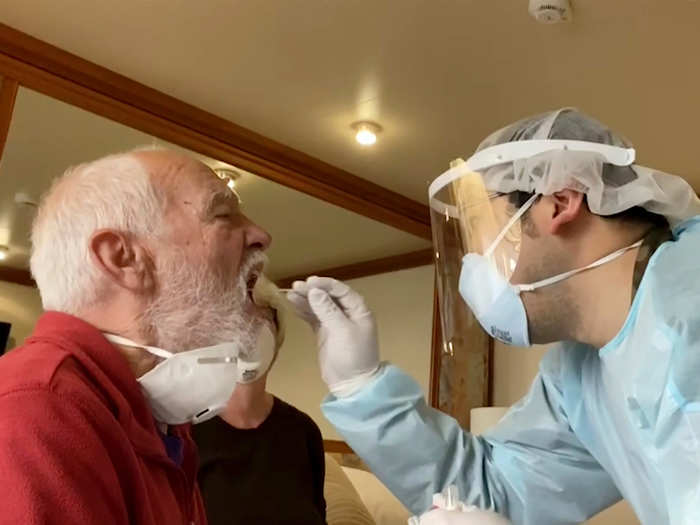
The ship started out with 3,711 people on board, both passengers and crew. That number would dwindle in the coming weeks as hundreds more people tested positive for the virus.
Dr. Norio Ohmagari, director of Japan's Disease Control and Prevention Center, told CNN that the quarantine "may not have been perfect" and that "scientifically speaking," crew members should have been isolated just like passengers.
"We suspected some of the cruise staff may have already been infected, but ... they had to operate the cruise ship itself, they had to see the passengers, they had to deliver the meals," Ohmagari added. "So that may have caused some close contact with the cruise ship workers and also the passengers."
Fehrenbacher said it felt like there was a "wall for information" as he waited for his test results. They never came. He eventually found out he'd tested negative, but said "it was just a process of elimination."
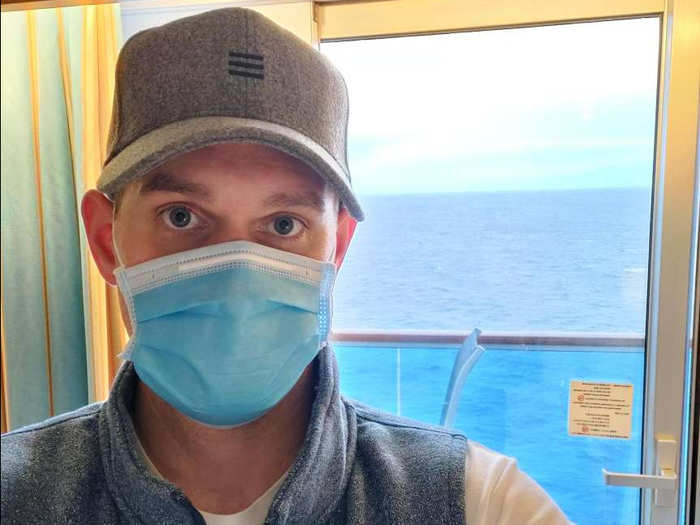
On February 7, the ship's captain and CNN correspondents confirmed that all the tests taken on the ship had been processed.
"It was like, ok well if I'm still here tomorrow, then I'm negative," Fehrenbacher said.
Nobody came to his door to take him off the ship.
Japan's Ministry of Health, which oversaw the quarantine, did not to Business Insider's request for comment in time for publication.
Princess Cruises has promised to refund "full cruise fare for all guests including air travel, hotel, ground transportation, pre-paid shore excursions, gratuities and other items."
Fehrenbacher and Christoph spent the next 12 days in the room they shared.
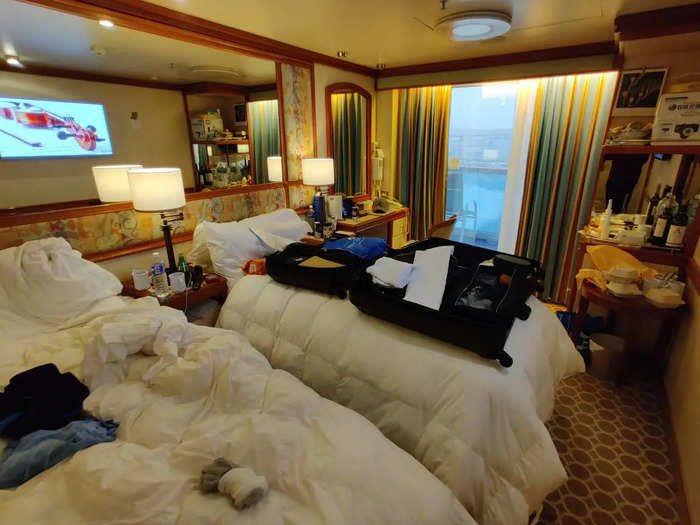
"We tried to enjoy it as much as we could," Christoph said.
The cruise line offered passengers free alcohol, so the two said they ordered it regularly for the first few days.
"Being somebody who doesn't normally spend $42 on a bottle of wine, that was a really nice treat in the middle of a quarantine," Fehrenbacher said.
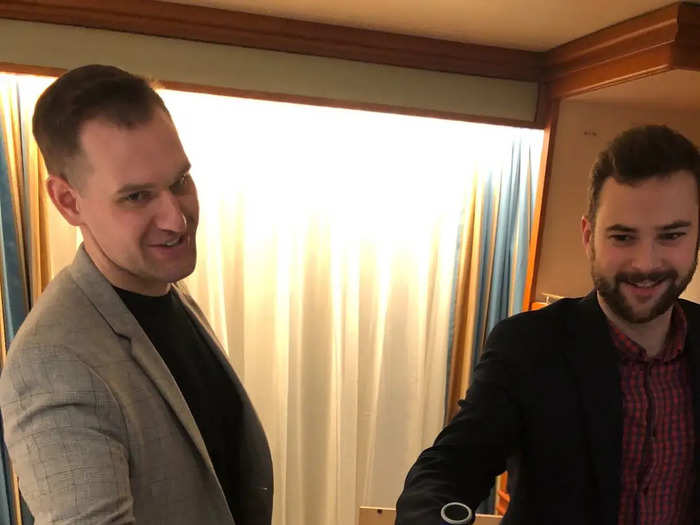
After talking with other passengers, though, Fehrenbacher and Christoph decided to cut back on drinking to keep their immune systems in working order.
To pass the time, Fehrenbacher read a science-fiction trilogy and watched videos that his mom sent him with messages from friends and family.
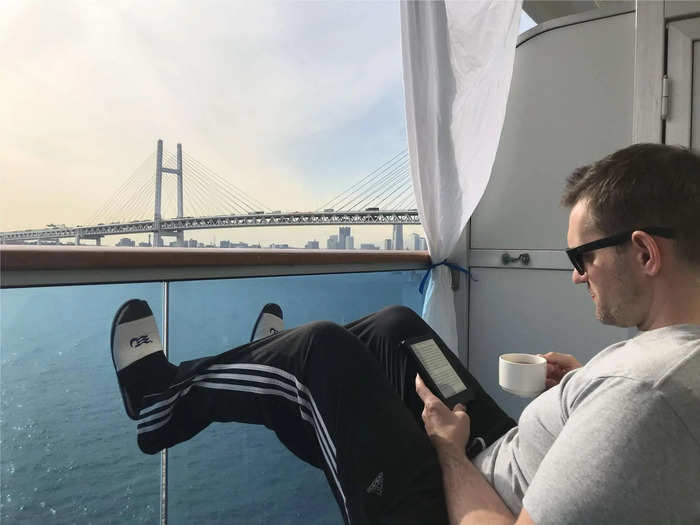
"It just feels good to see familiar faces and hear those voices," Fehrenbacher said at the time. "When I'm feeling good about the whole thing, it's super encouraging."
But some nights he went to bed "just thinking about the worst-case scenario of everything," he said, adding that the quarantine was "a rollercoaster of ups and downs."
"The first eight days of the quarantine on the cruise ship, my roommate and I were both very focused on remaining supportive, remaining optimistic," Fehrenbacher said.
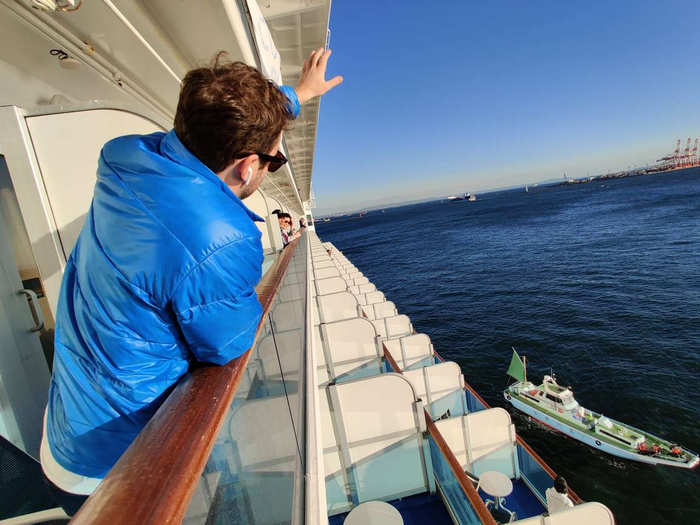
They shared a balcony with the two other friends traveling with them. The group spent nights playing Cards Against Humanity and other games.
Fehrenbacher said he also spent a lot of time watching TV and laying in the sun. He talked to his dad about three to five times each day.
He said he started boiling the silverware that came wrapped in a napkin with each meal.
During a live TV interview with Canadian broadcaster CBC News, Fehrenbacher realized that authorities had stopped updating passengers on the boat's case count.

As Fehrenbacher sat in front of his laptop, the CBC reporter introduced him with an update on the cruise ship outbreak: 67 new people had tested positive.
It was the first time Fehrenbacher had heard the number.
"It was just like a hammer in the face," he said. "I felt like an absolute buffoon in that moment."
Before that, Fehrenbacher had been championing the quarantine efforts of Princess Cruises and the Japanese government. He'd even written an op-ed about it for USA Today.
"They were not being entirely forthcoming anymore. And that was a very disappointing experience," he said.
The next day, Fehrenbacher and Christoph left the ship with 327 other evacuees, bound for the US. Once back on US soil, they'd face another 14-day quarantine.
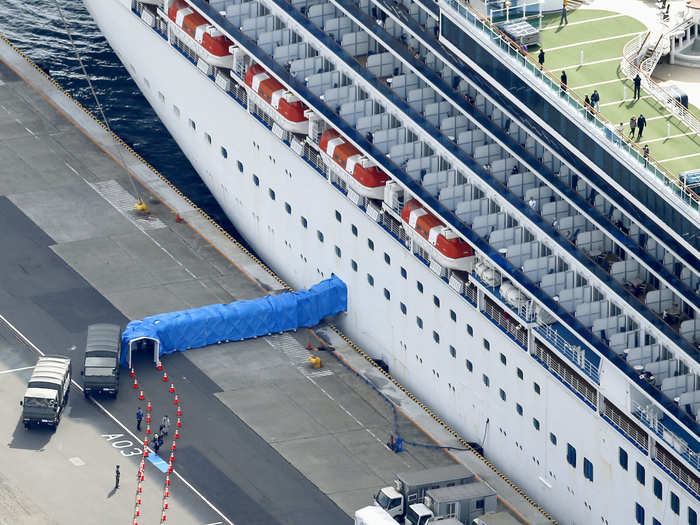
After the US quarantine, Fehrenbacher planned to go to his parents' home in Canada.
He said he and Cristoph were both hesitant about leaving their rooms and sharing a plane with the other passengers they'd been avoiding for two weeks.
The evacuees boarded buses to take them to Haneda airport — a 20-minute drive, by Fehrenbacher's estimate. But he said they sat in the buses for hours, with people coughing all around them.

Fehrenbacher said some people tried to hide their coughs, though many had a lung-deep, rasping cough that indicates more than a scratchy throat.
The CDC did not respond to a request for comment in time for publication.
"All you can do is kind of try to get as small as you can and hope that that respirator is fully sealed around your face," Fehrenbacher said.
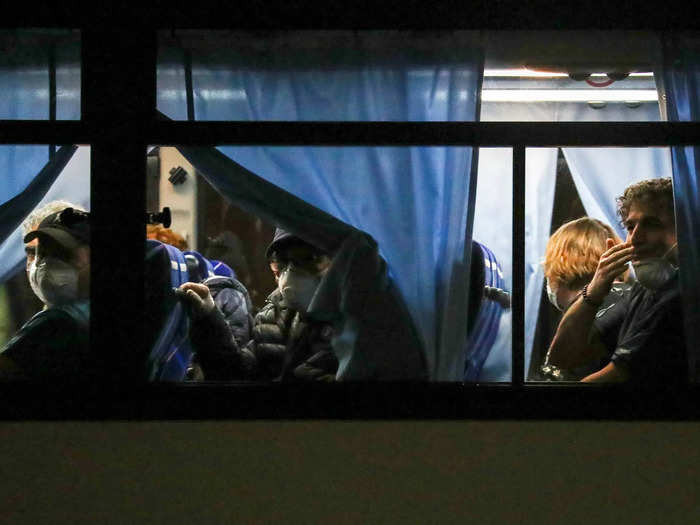
After a few hours, a woman stood up at the front of the bus, called for attention, and explained the proper protocols for wearing an N95 respirator mask, Fehrenbacher said.
After she sat down, Fehrenbacher said he heard someone behind him mutter "mask nazi" under their breath.
"You could tell that the flip — between being a passenger who's catered to on a luxury cruise line, versus an evacuee being rescued in the middle of an outbreak — that switch hadn't flipped for quite a few people," Fehrenbacher said.
"Some people were very, very critical, very, very frustrated, extremely upset with the circumstances of the bus ride," Christoph added.
More than two hours in, a man asked about using the bathroom, Fehrenbacher said. There were none on the bus.
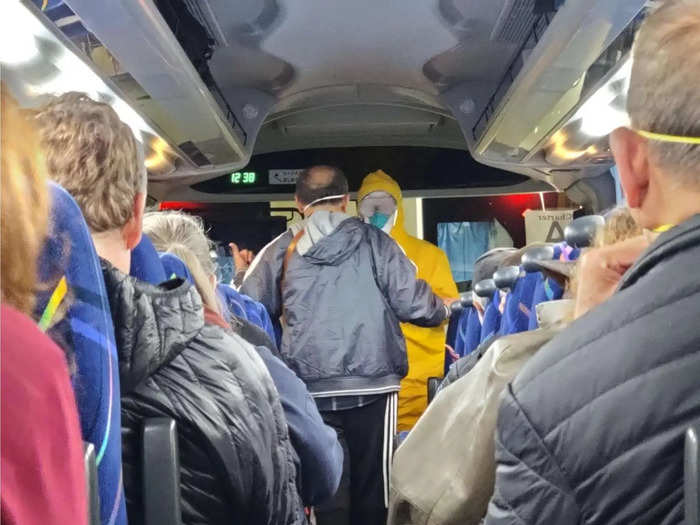
He said the man was first told that he would have to wait, so he sat down. But as more time passed, the man went back to the driver and insisted. Other people on the bus began scolding the driver, Fehrenbacher said.
Eventually, workers in hazmat suits took the man off the bus to use a bathroom. Others did the same.
Before they could load onto the cargo planes, officials had to return everyone's passports, which was "its own ordeal," Christoph said.

The process seemed disorganized, Fehrenbacher said — workers in hazmat suits handed passports to people at the front of the bus and let passengers pass them in a line to their owners at the back. He worried about all the hands touching each passport.
Fehrenbacher didn't know it at the time, but a metal and plastic box on the flight was holding people who had already tested positive for the coronavirus.
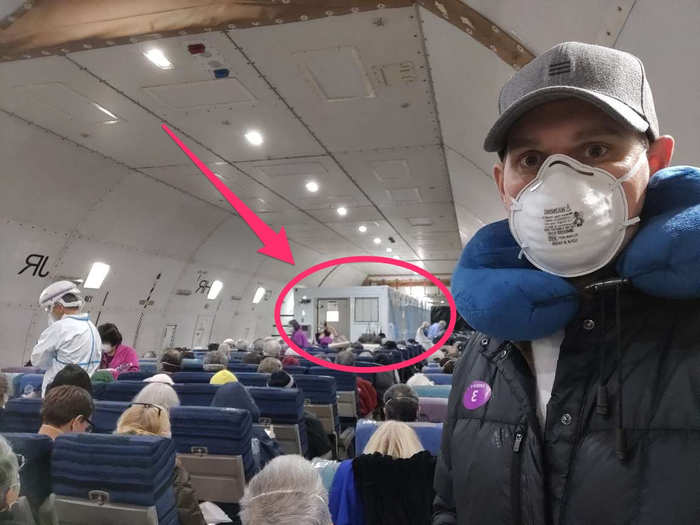
The Washington Post reported that CDC officials had argued against the decision to have sick and healthy people fly on the same plane. The sick individuals' tests had come back positive after they had already begun leaving the cruise ship and boarding their buses.
The CDC lost that argument on the tarmac, the Post reported, then insisted they be left out of the news release announcing that 14 infected Americans had shared a plane with more than 300 others.
That argument is likely the reason the buses were held up for so long.
Fehrenbacher said it wasn't until later, when he talked to a reporter, that he learned he'd shared a plane with people who had tested positive for the virus.
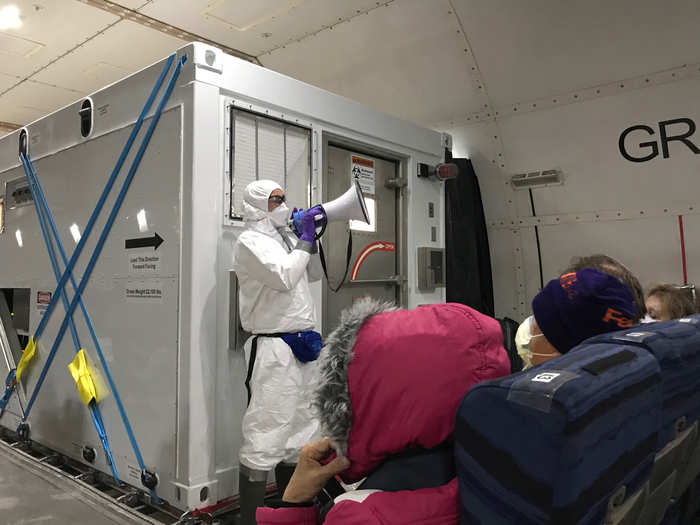
Officials had told the evacuees that nobody who tested positive would be on the flight, he said.
"At the very least, I think they should have told us when we were on the tarmac," Fehrenbacher said. "These people who were spending 20 minutes with their masks off, eating sandwiches and having snacks — they might have been a little bit more careful."
On the flight, passengers could take from boxes of supplies like face masks and water bottles as they boarded the plane.
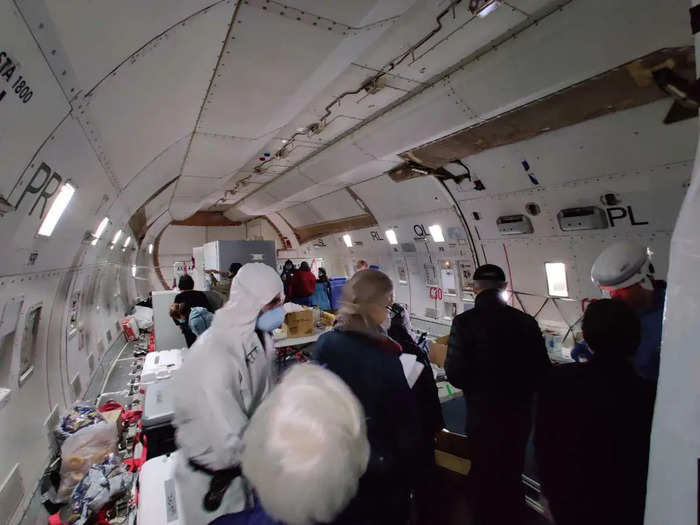
Officials also provided snacks, but Fehrenbacher said he didn't eat on the flight for fear of exposing himself to the virus.
Fehrenbacher said he slept for most of the flight. He covered his eyes with a surgical mask that he'd been handed at the front of plane.
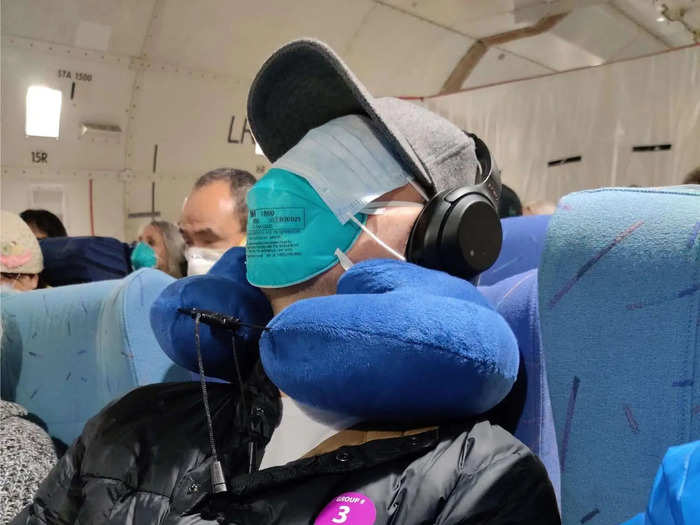
Christoph said he also slept for most of the flight, and hoped his glasses would provide some eye protection.
The plane landed at Travis Air Force Base in California, where the evacuees would complete their next quarantine.
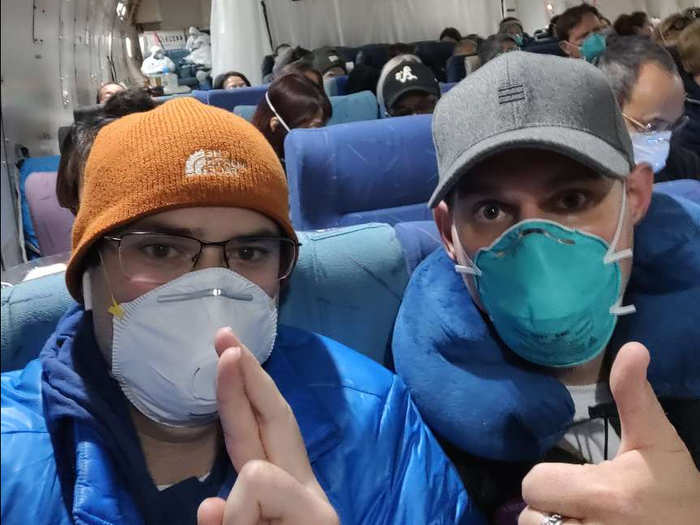
Fehrenbacher said he later realized that a woman sitting behind him had also tested positive for the virus: When the plane landed, he said, a CDC official told her she would be continuing to Omaha, Nebraska — where the CDC sent the infected Diamond Princess evacuees.
The CDC did not respond to a request for comment about the woman's case in time for publication.
"Every single person, first thing they said was 'welcome home,' 'welcome home, sir,'" Fehrenbacher said of his arrival.
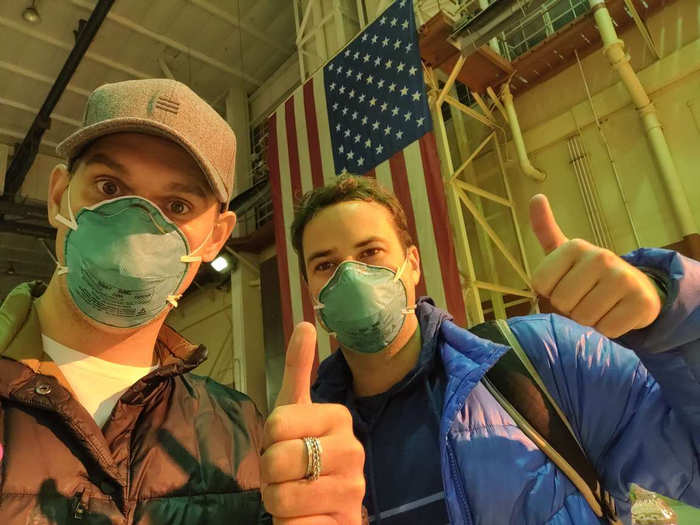
"You hear 'welcome home' 100-plus times in a situation like that, it's very emotional. It's very heartwarming," he said. "It kind of makes it a little more clear how dramatic the situation that you've just gone through actually is."
When he got to the apartment where he'd be staying while quarantined, Fehrenbacher said, the first thing he did was shower and request disinfecting wipes to clean his luggage.

"I used probably half a bar of soap trying to just feel clean again," he said, adding, "I was still concerned that, ok, let's hope that I don't have this virus. Because every time I had to clear my lungs I was worried that I had it."
The morning everyone got their next test results, Fehrenbacher said, CDC workers went apartment to apartment with a 50-gallon trash can, stacks of gowns and gloves, a big bottle of hand sanitizer, and manila envelopes.
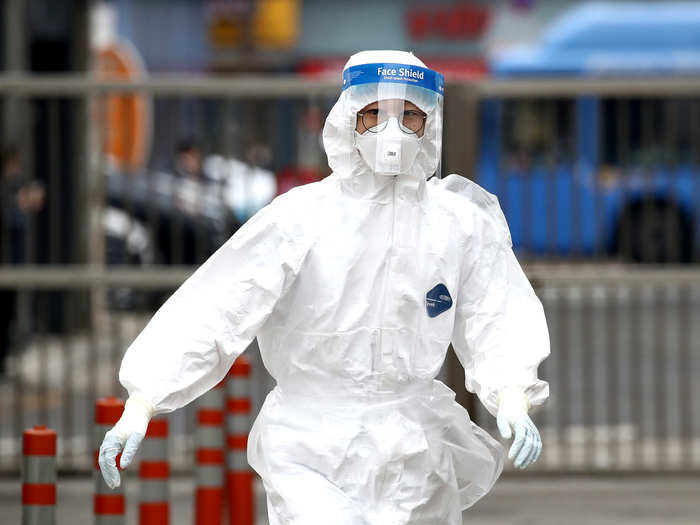
"They go into an apartment, they come out a couple minutes later, and they would kind of help one another take the gown off, throw it in the trash, take the gloves off, put hand sanitizer on, and then put new gloves on, put another gown on, and take the trash can and walk to the next apartment," he said.
They told Fehrenbacher his coronavirus test had come back negative. "I sat down on the ottoman behind me, and I just felt an overwhelming feeling of wanting to burst into tears," he said.
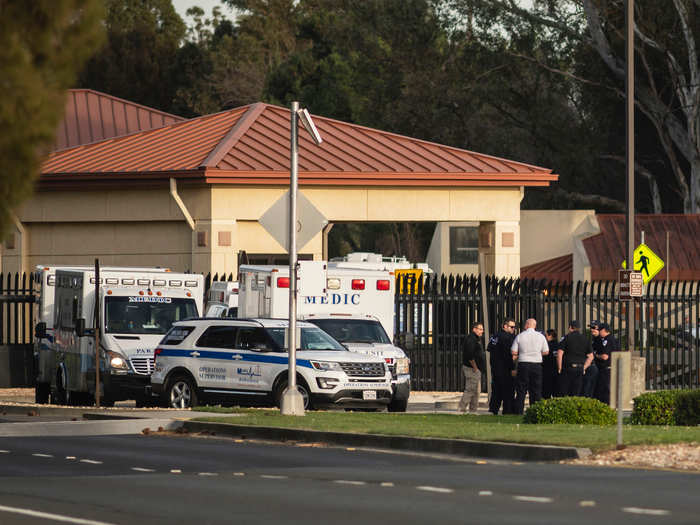
They read him a script that said he still needed to monitor his symptoms, then moved on.
"It took a few minutes to process. My dad was the first person that I called," Fehrenbacher said.
He added, "the times that I've cried throughout most of the quarantine were times when I didn't really ever expect it to happen."
Fehrenbacher and Christoph are no longer confined to their room, so they spend much of the day outside on the military base, as do many of the other people under quarantine there.
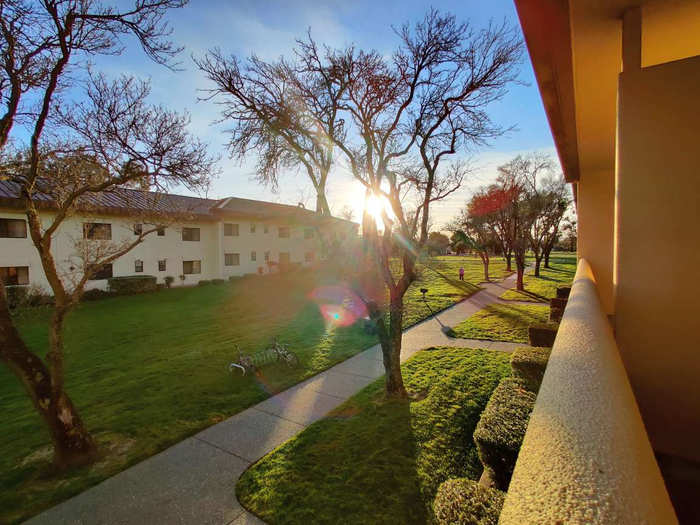
People walk around the lawns, play soccer, sunbathe, and do calisthenics, he said. Everybody wears face masks and tries to stay 6 feet apart.
Fehrenbacher said he has about 300 pages of his last book left. He still spends lots of time with Christoph.
"We went on a late-night walk, which is quite the experience because the whole yard is lit by these giant floodlights," he said. "There's at least three or four cars and trucks with US marshals sitting in them to keep watch around the perimeter."
"[It's] somewhere between a zombie movie and summer camp," Fehrenbacher said. "I don't know if this is awesome or if this is terrifying."
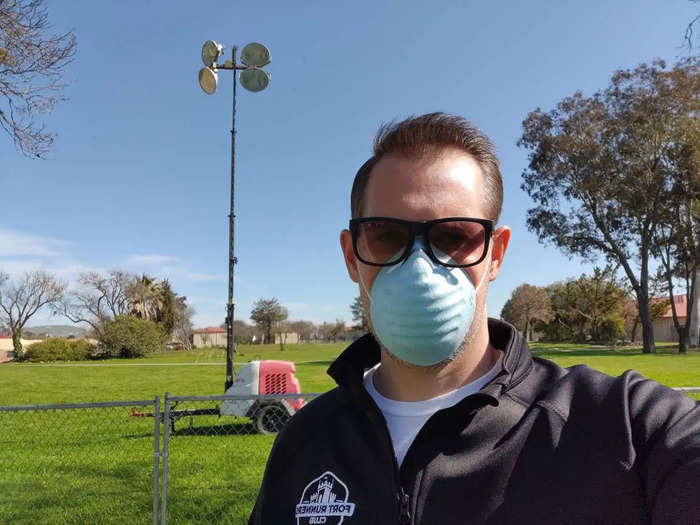
He said he and Christoph go into the laundry rooms, which are often filled with extra supplies, to see what kind of loot they can find. Sometimes there are bottles of lotion or shampoo, cases of soda, or boxes of cookies.
"The best thing that I've gotten at this point was a bottle of hand sanitizer," Fehrenbacher said.
"I'm kind of in a limbo stage right now, where I can't go back to China for the foreseeable future, and beyond that I have to find a place to stay," Christoph said.

"The last 20-some days quarantined on a ship and then here, I guess it's just kind of a free meal and a free bed," he added.
Fehrenbacher said he's excited to be with his family again, but nervous about what the interaction with customs will be like. He's preparing himself for the chance that Canadian officials will ask him to complete another 14 days of isolation.
"If there's one thing I'm learning in this quarantine, it's that you just have to be ok with the absolute unexpected happening and just having to roll with the punches," he said.
Isaac Scher contributed reporting.
- Read more:
- How the 'failed' quarantine of the Diamond Princess cruise ship started with 10 coronavirus cases and ended with more than 700
- As the coronavirus outbreak worsens outside of China, hopes of containing it are diminishing
- Photos show what it's like to travel around the world by train, bus, boat, and plane in the age of coronavirus
- Mapping the coronavirus outbreak: Where in the world — and the US — the disease has spread
Popular Right Now
Popular Keywords
Advertisement